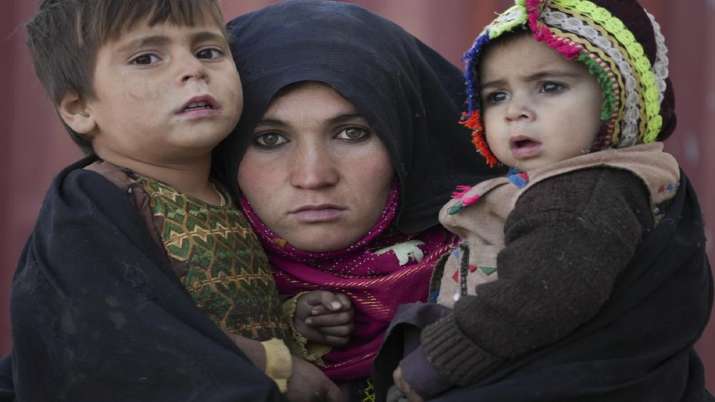
An Afghan woman holds her children as she waits for a consultation outside a makeshift clinic in a vast settlement of mud-brick huts housing people displaced by war and drought near Herat, Afghanistan.
Highlight
- 13,000 newborns have died of malnutrition, hunger-related diseases in Afghanistan since January
- 95% of the population does not have enough to eat, 3.5 million children need nutritional support
- The United Nations has called the situation a “food insecurity and malnutrition crisis of unparalleled proportion”.
As headlines continue to rage over the Russo-Ukraine war, nearly 13,000 newborns have died from malnutrition and hunger-related illnesses in Afghanistan since January. 95 per cent of the population does not have enough food to eat and 35 lakh children need nutritional support.
The United Nations has called the situation a “food insecurity and malnutrition crisis of unparalleled proportion”.
“Since the beginning of the year, nearly 13,000 newborns have died in Afghanistan from malnutrition and hunger-related diseases. That is, on average, more than 170 children every day. The country needs a functioning central bank. Aid is not enough, Birgit Schwarz, a senior Human Rights Watch (HRW) official said in a tweet.
In addition to humanitarian aid that many countries have sent, at this stage, Afghanistan also urgently needs a functioning banking system to deal with the crisis, as sanctions on Afghanistan’s Central Bank still make large transactions or withdrawals impossible. Huh. Without making sure the money is being used. For legitimate humanitarian and commercial purposes, HRW said it would be impossible to mitigate the crisis and help Afghanistan’s most vulnerable children.
UN Deputy Special Representative Ramiz Alkabarov said in a statement last week that acute hunger in the country rose from 14 million in July to 23 million in March, forcing families to resort to “desperate measures”.
“Unacceptable trade-offs have caused untold suffering, reduced the quality, quantity and variety of food available, caused high levels of wastage in children, and other detrimental effects on the physical and mental well-being of women, men and children. ” She wrote.
Read also: India sends 2,500 tonnes of wheat to Afghanistan via Pakistan
According to the UN Resident Coordinator, deputy head of the United Nations Assistance Mission, UNAMA, 95 percent of Afghans are not getting enough to eat, with the number rising to nearly 100 percent in female-dominated households.
“It’s a figure so high that it’s almost unimaginable. Yet, disastrously, it’s the harsh reality,” he said.
Alkabarov painted a picture of hospital wards full of malnourished children, many at an age a six-month-old infant in a developed country would weigh, with some “so weak they are unable to move”.
Dr Alkabarov said that 28 of the 34 provinces have high acute malnutrition rates with more than 3.5 million children who need nutritional treatment support. Since mid-August, more than 2,500 nutritional treatment sites, both urban and rural, have been serving 800,000 severely malnourished children in all 34 provinces, he explained, “and we plan to reach 3.2 million affected children this year”.
(with ANI inputs)
read alsoUN establishes formal ties with Taliban-ruled Afghanistan